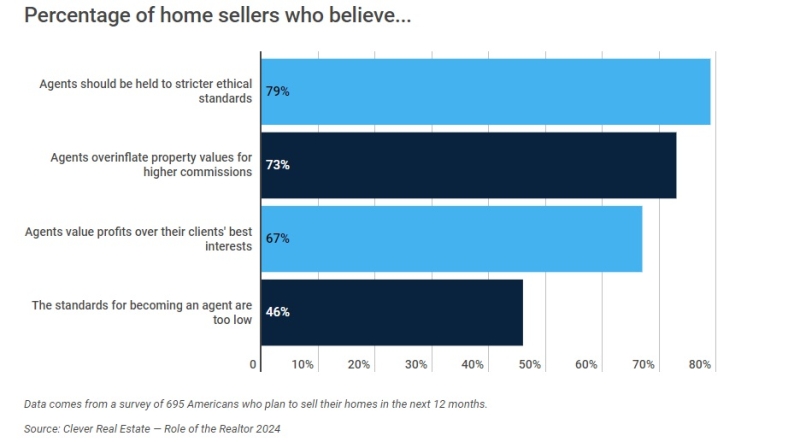Advertisement
Trend Spotter: Motivating move-up buyers

Congress has extended the $8,000 first-time homebuyer tax credit and expanded it to include a $6,500 tax credit for move-up homebuyers who have lived in their primary homes for at least five out of the last eight years. We have only a few short months (until April 30, 2010) to generate business with this incentive. How can we get the maximum benefit out of this?
Number 1: Understand the homebuyer tax credit
► A “first-time homebuyer” is defined as someone who has not owned a home in the last three years. If you are a “first-time homebuyer,” your tax credit will amount to 10 percent of the purchase price of your new home not to exceed $8,000.
► A “long-time resident” is defined as someone who has lived in the same primary home for five out of the past eight years. If you are a “long-time resident,” your tax credit will amount to 10 percent of the purchase price of your new home not to exceed $6,500.
► The tax credit does not need to be paid back if you continue living in the home as your primary residence for three years without selling it.
► The home must be purchased for less than $800,000 before May 1, 2010. If you sign a binding contract to purchase a home before May 1, you would need to close the transaction before July 1, 2010.
► Single taxpayers with incomes up to $125,000 and married couples with incomes up to $225,000 qualify for the full tax credit.
► You cannot purchase the home from a related party, such as a spouse, direct ancestor or direct lineal descendent (child or grandchild). However, you can still qualify for the credit if you purchase a property from siblings, nephews, nieces and others.
► If you are married, both spouses must qualify for the credit.
► If more than one unmarried individual is buying the property, the credit can be split up among all the individuals who qualify. However, the total credit taken cannot exceed $8,000 (or $6,500 for “long-time residents”). Alternatively, if only one of the unmarried buyers qualifies for the credit based on their income or past homeownership status, the individual who qualifies for the credit can claim the full credit.
► The credit applies even if you have co-signers on your mortgage loan.
► The credit applies to one- to four-unit homes, as long as you live in one of the units as your primary residence. You could live in one unit and rent out the others.
► There are two special rules that apply to members of the uniformed services, the Foreign Service of the United States, or employees of the intelligence community:
● If you have served for at least 90 days of the year outside of the United States, you have until May 1, 2011 to purchase your home and receive the tax credit. In that case, if you sign a binding contract to purchase a home before May 1, 2011, you would need to close on the transaction before July 1, 2011.
● If you end up selling the new home you are buying in connection with government orders for official service, the credit does not need to be repaid even if you sell your home within the three year timeframe.
Number 2: Simplify the homebuyer tax credit
Now that we understand the rules behind the credit, it’s time to make the credit easy for people to understand. The best way to do this is to give them a story, example or analogy to which they can relate. Here’s the analogy that I’ve been using to simplify the tax credit and make it easy for people to understand:
A tax credit is kind of like a gift certificate that you can use to pay your taxes—it reduces your income tax bill on a dollar for dollar basis. Imagine paying your bill at IRS Restaurant, and then later getting an IRS Restaurant gift certificate. Normally, you would need to go back to IRS Restaurant and buy more food in order to use your new gift certificate. But what if IRS Restaurant allowed you to just turn in your gift certificate for cash? That’s how the homebuyer tax credit works! All you need to do is file a form with the IRS after you buy your new home and they will send you a refund check for $8,000 (or $6,500), just like the example of IRS Restaurant that allows you to exchange your gift certificate for cash!
Number 3: Make it about the client’s life
People are not motivated by dollars and cents, but they are motivated by how dollars and cents impact their life. The biggest mistake that loan originators make is to focus on the numbers instead of focusing on the client. The way to motivate move-up homebuyers is to demonstrate the impact that buying now would have on their life, as opposed to the impact of buying later. If they purchase now, would they be more financially equipped to send their kids to college without breaking their budget? Would they be more financially empowered to comfortably meet their retirement goals? Would they be in a better position to care for elderly parents?
For example, the $6,500 tax credit invested at a seven percent annual rate of return would grow to nearly $13,000 in 10 years. Perhaps this $13,000, combined with the Fed’s $1.25 trillion mortgage rate subsidy (saving them at least one percent in interest or $66,000 over the life their $200,000 mortgage—see last month’s TrendSpotter column), can be used to help send the children to college, get the retirement fund back on track, or pay for an assisted living facility for mom and dad who are aging.
Once you paint a picture of the benefits of buying now, talk about the pain of buying later—the kids will have a tougher time with their college funding, the retirement account will remain under-funded, mom and dad’s ailing health will negatively impact the personal and financial goals of you and your children.
In other words, get creative with how you talk to clients about the $6,500 tax credit or any other numbers you are going over with them. Remember, numbers don’t motivate people. Life motivates people. Your mission, should you choose to accept it, is to make the numbers come alive by talking to clients about what the numbers mean for their life. Certified Mortgage Planning Specialist (CMPS) certification equips you with scripts, strategies, dialogue structures, resources and presentation tools to make the numbers come alive in every communication you have with clients, prospects and referral partners.
Gibran Nicholas is the founder and chairman of the CMPS Institute, which administers the Certified Mortgage Planning Specialist (CMPS) designation. The CMPS Institute has enrolled more than 5,500 members since its founding in 2005. Gibran is also the chairman of Published Daily, a customizable online magazine, newsletter and marketing service that helps professionals transform their clients and prospects into a referral-generating sales force. He may be reached at (888) 608-9800, ext. 101.
About the author





